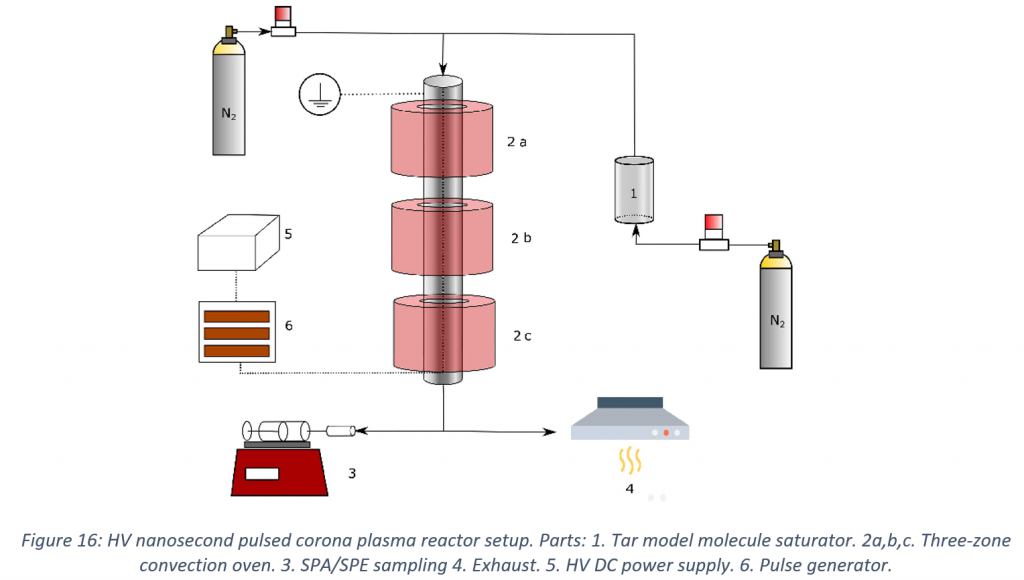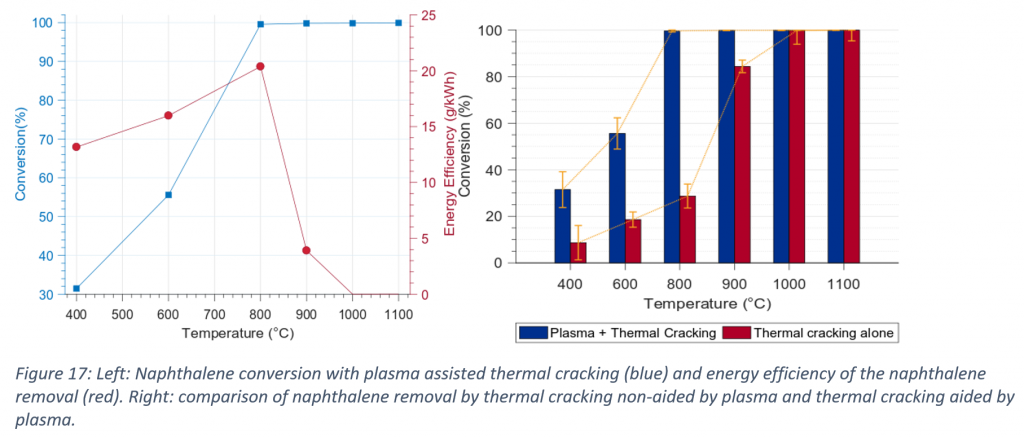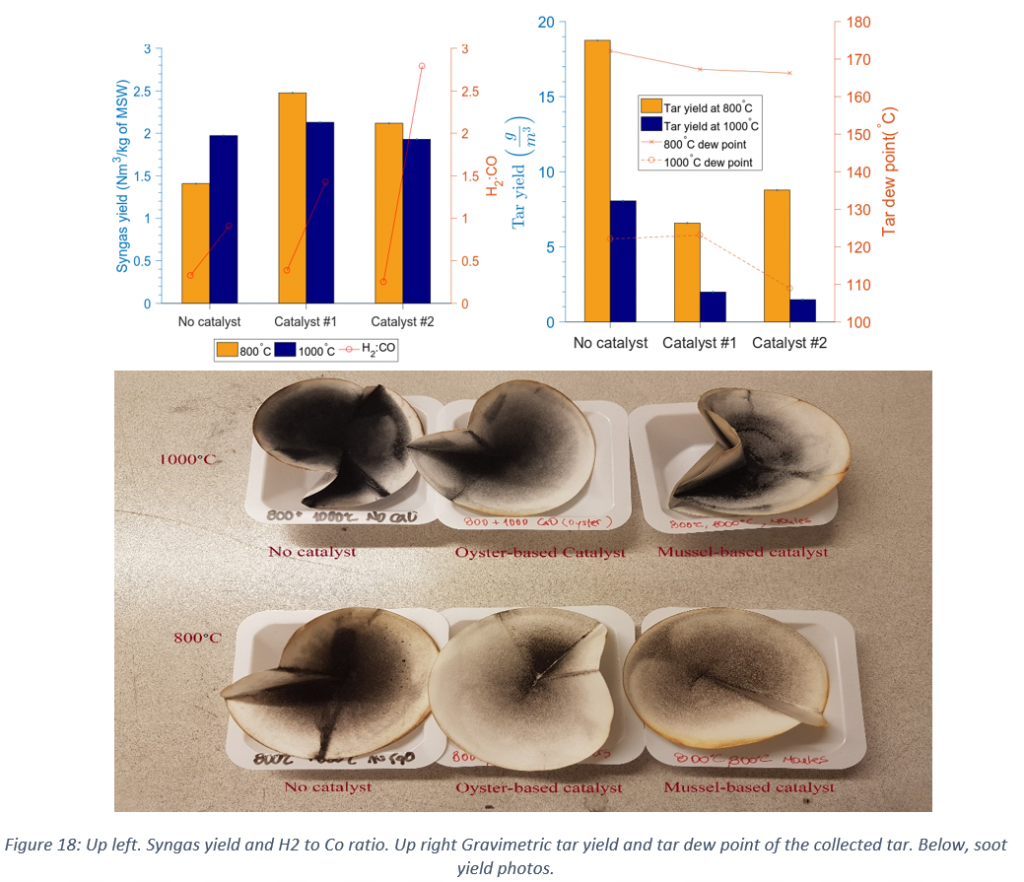
Gasification of municipal solid waste is considered as a key tool for recovering energy from landfills. However there is a huge obstacle which limits the use of the syngas produced: the presence of tars. In this research I use a novel technology, a hybrid reactor using high temperatures and a corona plasma, in order to get rid of tars in syngas. The objective is to find the right process conditions (using data from literature and from an industrial gasification reactor) that reduce the tar concentrations as low as to use syngas in gas turbines, fuel-cells and fischer-tropsch synthesis. Do you want more information? Do you have any questions regarding the project? Contact me at yamidali.gomezrueda@kuleuven.be and I will help you as much as I can.
Problem statement & objectives
Gasification of MSW generates a valuable syngas that can be used as a fuel in fuel cells (PEM, SOFCs, SOECs), gas turbines, internal-combustion engines and boilers for electricity generation. Unfortunately, the potential of gasification to produce clean gas is limited due to the presence of tar. Tar composes a set of substances that can clog pipelines and accessories due to its high dew point, but they are also a great source of pollution and deactivation of the active phase in the anodic catalyst. In this research the main goal is to remove tar by using plasma by studying its effect on tar yield, tar composition and tar dew point combined with other process variables (temperatures, residence time, plasma power, use of catalyst, etc.). The following are the specific objectives:
- To develop an experimental plan (according to a Design of Experiments approach) that allows investigating the influence of input and operating parameters on plasma tar cracking of syngas.
- To study the thermochemical mechanisms of plasma tar cracking.
- To investigate the influence of different input and operating parameters (synthetic gas mixtures, model and real tar compounds, temperature, gas flow rate).
- To study the synergistic effect between thermal cracking and plasma cracking.
- To transfer the new insights regarding plasma tar-cracking mechanisms into an improved operation of a plasma-gasification system.
Methods
The methodology followed to get the results was a cascade procedure of the following steps: bibliographic research, design of experiments, experimental work, results analysis and process simulation. There were two feedback processes between process simulation and design of experiments and between results analysis and experimental work, in order to check results or to confirm the conclusions. Input from scientific data and from ESR 5 were used for better experimental design and for process simulation.
The experimental part consisted on a plasma reactor embedded in an oven able to reach 1200°C. The plasma power unit can reach up to 60kV and can produce plasma pulses of around 100ns at a rate of 70-72 pulses per second. The reactor is fed with a synthetic polluted gas with a set of flowmeters able to control the different gases fed and the residence time inside the reactor. The gas composition is monitored with an IR gas analyser. The level of pollutants is determined by GC-FID and GC-MS analysis ex-situ. The pollutants are sampled by the SPA/SPE method. The scheme of the plasma reactor is shown in Figure 16.

Results obtained during the reporting period
The first set of results show that the use of plasma can help to decrease the maximum temperature needed to crack naphthalene. Figure 17 (right), shows that the temperature reduction is around 200 °C with respect to thermal cracking. In Figure 17 (left), it is observed that the energy efficiency tends to increase with temperature, but once all the naphthalene is cracked, the energy efficiency drops drastically. That means that plasma can be used to improve naphthalene cracking but a careful optimization should be done to obtain the best performance in terms of energy efficiency.

A second result of the research is that the use of calcined shells, a cheap material, can help to reduce tar yield, speciation and tar dew point. In this case, the calcium oxide synthesized is placed in a two-stage reactor, fed with air and municipal solid waste. The reduction of tar and soot are evident for both materials, especially at high temperatures, together with a much better syngas yield and quality as can be seen in Figure 18. The results obtained seem to be promising for further research in a plasma-catalytic tandem using this material as a catalyst or catalyst support.

The good results of CaO as catalytic agent for tar removal seem to be related to its capacity of avoiding the generation of PAHs by producing more ethylene and acetylene.
Conclusion & Outlook for further work
Plasma can drastically reduce the need of high temperatures for tar cracking. The use of high temperatures increases the plasma power per pulse and therefore the plasma cracking is favoured at higher temperatures. However, this synergy has an optimum, and when thermal cracking of naphthalene starts to be considerable, the energy of the plasma is consumed in other processes. Therefore, the plasma must be tuned in order to find the best performance in terms of power consumed.
Some waste materials, like mussels and oyster shells, are good materials to reduce the tar dew point, to reduce soot and to improve the H2/CO ratio in the syngas. Their use with plasma could reduce even more the maximum temperature needed for tar removal.
Other materials such as bauxite residues and fly ashes are also promising to eliminate tar from syngas, and their combination with plasma can be even more interesting because of the presence of photocatalytic and photoelectrocatalytic compounds.

